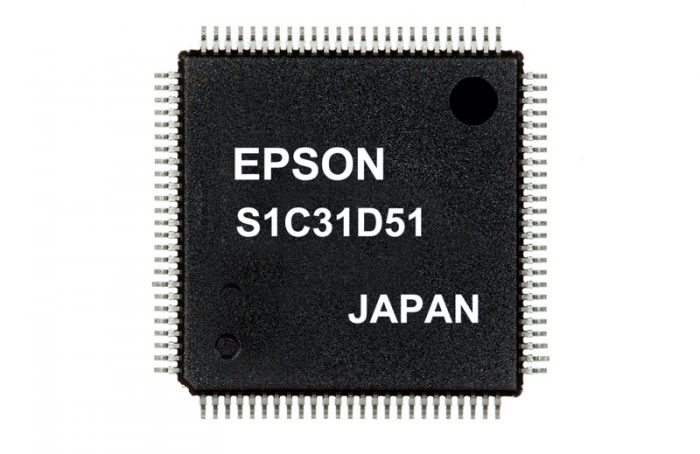Epson presents its new S1C31D51 a 32-bit ARM® Cortex®-M0+ microcontroller

Photo by EPSON EUROPE ELECTRONICS GmbH
Seiko Epson Corporation has developed and begun shipping samples of the S1C31D51 a 32-bit ARM® Cortex®-M0+ microcontroller (MCU) with dedicated hardware which can play sound on either a speaker or buzzer. Epson plans to produce 200,000 of the new controllers per month.
Sound is becoming an increasingly popular feature in home electronics, remote controllers for home appliances, industrial devices, health and fitness equipment with guidance systems, or alarms in office buildings, shopping complexes, and factories. This MCU is ideal for all these applications.
An ARM® Cortex®-M0+ processor integrated with a dedicated HW Processor provides 2-channel sound on a single MCU chip. By making it possible to output voice guidance sound like error and warning messages on a buzzer instead of a speaker, the usability of the MCU is increased. Common buzzer sound output performance is often very poor because of low volume and limited bandwidth. Epson improved buzzer performance by using a combination of software and hardware support.
An dedicated “HW processor” support of the MCU enables two special features.
First, the HW processor plays sound without requiring CPU resources, so CPU resources can be allocated to other processes even during sound playback. The use of a high data compression algorithm(16 kbps @ 15.625 kHz) shrinks the size of sound data memory, making it possible to provide a large amount of sound data and sound data in multiple languages.
One big advantage of Epson`s Sound solutions for customers is its own Voice Creation PC Tool. This software tool will be provided free of charge to customers and is a simple development environment for easily creating sound data for 12 languages without studio recording. You can also use existing WAV data.
Second, the MCU has a self- memory check function that can detect failures in built-in RAM, built-in Flash, and external QSPI-Flash memories without using CPU resources.
Epson is committed to helping its customers improve the performance of their products with solutions that leverage Epson’s efficient, compact, and precision technologies.
For more information, please visit http://www.epson-electronics.de.
News Categories
- » NEWS HOME
- » Automation & Robotics
- » Industry 4.0
- » Material Handling
- » Sensors
- » Quality & Testing
- » Machine Vision
- » Laser & Optics
- » Metalworking
- » Motion Control & Drives
- » Hydraulics & Pneumatics
- » Process Industry
- » Renewable Energy
- » Agriculture
- » Home & Office Furniture
- » Environmental Tech




